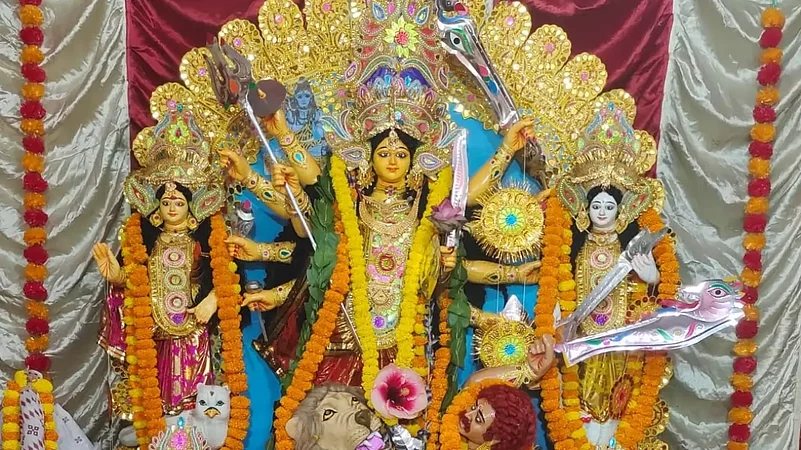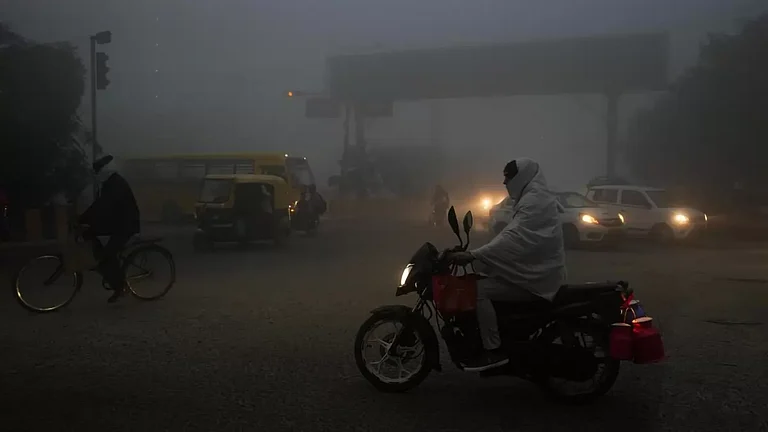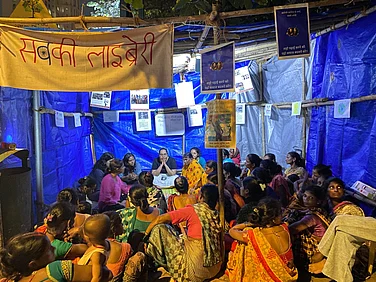We live between conventions and changes, in gendered spaces and in that bubble of continuity which we believe will never burst. This belief is hope. This belief is what is manifested in the form of our rituals, and festivals. Even in strange times, in difficulties, we seek continuity with the past. That becomes our shield. Tradition gives us that continuity, they also give us the courage to step out of it, and embrace the unfamiliar.
All these, I have learnt over the years. This is how I have learnt to look at the Durga Pujo at my ancestral home.
The occasion makes all of us click hundreds of photos, in untrained, shaky hands, with wrong angles and low lights. Yet the spirit of bonhomie seeps through. Here’s a bunch of pictures that have accumulated across the years, clicked by several hands, using different devices. They tell multiple stories, some seen, some behind the scenes…

The Goddess comes home. From Kailash, she shifts her location to the mortal world, her parents' place. I follow the trajectory too and move base to Sodepur during this time of the year. Durga pujo is a family affair in Senbari, at Natagarh, Sodepur. It's like the centripetal force that has an inward pull, bringing most of its members back home around this time. It's a legacy that's more than three centuries old. For me, it has always been associated with homecoming, only the departure points have changed.
With every change in place of dwelling, the concept of home has evoked newer questions about its tangibility and permanence.

The puja itself has shifted location. In undivided Bengal, it was at Chandrahar, Barisal. The story goes that it was a grand affair there with buffalo sacrifices and hundreds of people being fed. Before partition, when Narendranath Sengupta shifted to Natagarh, along with a large number of his clan, the puja shifted to this side of the border.

For a group of people, relocating to a land of uncertainties, the puja must have meant hope. The tradition has been continuing since then, undaunted even by the Covid 19 pandemic.
The puja now, with its years of association with the family has transcended the religious boundaries to imbibe social connotations. To a middle-class family, fighting its everyday battle to maintain a certain standard of lifestyle, the puja has come to mean rejuvenation, of letting go and also of coming together, at least once a year, to renew rusted bonds.
The customary cultural evening on each Shasthi or Saptami brings friends and relatives together. While previously there used to be jatra, a form of folk theatre, and other theatre performances, nowadays there are songs and dances, with the mandatory performance of the Debi mahatto. This year, with the growing number of tech savvy young adults in the family, an e-card containing the programme schedule was also circulated in advance.




Much have changed, much still continues, but each pujo evokes the question in me – have we really been able to let go of all our prejudices?
Durga Puja being a five-day affair, its planning starts a few months before. Since this tradition has been continuing for years, most of the things are already set - the idol maker, the pandal makers, the dashakarma (puja materials) supplier, the fish monger, the vegetable seller, and so on. Traditionally, even today the puja arrangement inside the mandap is done by the women of the family while the men take up the chores beyond the house – like shopping, bringing the ganga jal, and yes, the dhaki or the drummer, and removing the coconut fibres to get the whole coconut fruit.




Gendered spaces exist everywhere, in unwritten rules, yet there are moments when they get overstepped, blended or broken.
The puja begins:


The puja starts at Shasthi at bodhantala, a space under wood apple tree. On Saptami, through pran pratistha, the goddess is invited to reside in the clay idol. It still remains the prerogative of a male brahmin to do the honours, though at very few places things have begun to change.
I often wonder, wouldn’t a woman do a better job of it, she being the one who brings forth a life in this world…
The next few days sees the pujari engaged in a flurry of activities


108 ghee diyas are lighted for the goddess during Sandhi puja - the intermedial time of a few minutes, between ashtami and navami
One of the major attractions of the Durga Puja is the dhaak, or the Bengal drum. Initially, we had a dhaaki, the drummer, who used to come for these five days, live with the family and play the dhaak whenever required. Over the years, the boys have the house have developed a penchant for playing this instrument and for quite some years, they have taken upon the role. And once our old dhaki passed away, no one else was hired. Men of the house took over the task
Dhaakis too traditionally have been males. Yet, when these male members are not around, it’s the daughter-in-law of the house who takes upon this role. She may not be as skilled, but provides the support when required.
Certain moments in the puja requires an accompanying of the dhaak along with the mantra.

With time, consciousness change, traditions change. That is what it means to live – to accept changes, more so, if they are for the good.
A significant moment in the puja is the ritual sacrifice on Navami. While previously there used to be animal sacrifice, it has gone vegetal now. The objects of sacrifice are a whole sugarcane, an ash gourd and last but not the least, the shatru, or the enemy.
The shatru is a symbolic male figure made out of rice paste and folded between arum leaf. A bit of alta, a red dye traditionally used by married Bengali women to colour their feet, is sprinkled over it to signify blood. This shatru has to be hacked unseen, by holding the falchion in left hand and keeping one’s back to it
Pieces of the so-called slaughtered shatru is then picked up by men in the pandal and thrown away with left hand. This, they say, will ward off enemies.

Every celebration is also an occasion for a feast. The same holds true for the Durga Pujo at Senbari. These five days, family, extended family and friends come together for lunch and dinner. The fare is simple and fish remains a staple, though other vegetarian and non-vegetarian items also find a place.


And the Dashami brings visarjan, that is the immersion of the idol, and culmination of a five-day long celebration. Women bid farewell to the goddess, sending her back to Kailash and the mortals gear up to go back to their everyday life.
The sindoor khela, the most glamourised ritual of the puja, thanks to the social media, is also one of the most exclusivist space, consisting only of married women and none other. Between the goddess and her numerous devotees, comes the gender and identity – an identity of social sanction through one’s marital relation with the man.

The farewell to the goddess evokes complex emotions. A mother bids farewell to her daughter, sending her back to her husband’s house. There’s a festive spirit that makes people rejoice, there’s also the subtle grief of parting away with the goddess who had almost become a part of the family. It is in these interstices of pragmatism and make belief, that bhakti survives.
Even the celestial daughter is powerless to call her parental home, her own. The question of woman and home remains unsolved, even as the Devi leaves for her heavenly abode.


The water holds memories of so many immersions – the told and untold stories that lie behind every tradition, ritual and rite. To that water she returns…
(Dr. Nabanita Sengupta is an assistant professor of English at Sarsuna College (affiliated to the University of Calcutta) and an executive committee member of the Intercultural Poetry and Performance Library.)






















